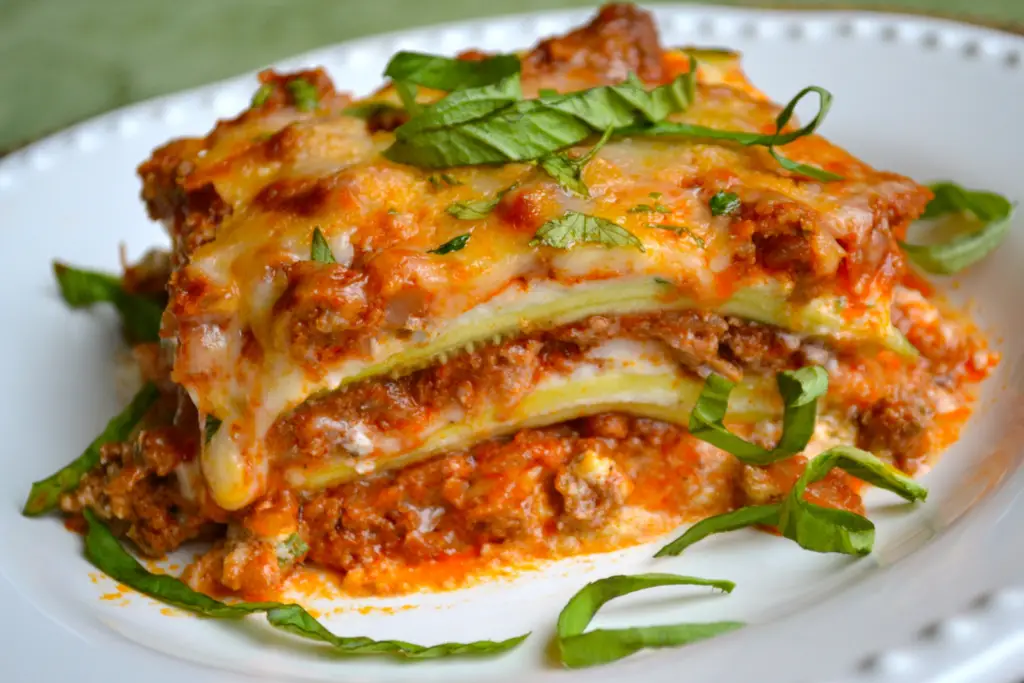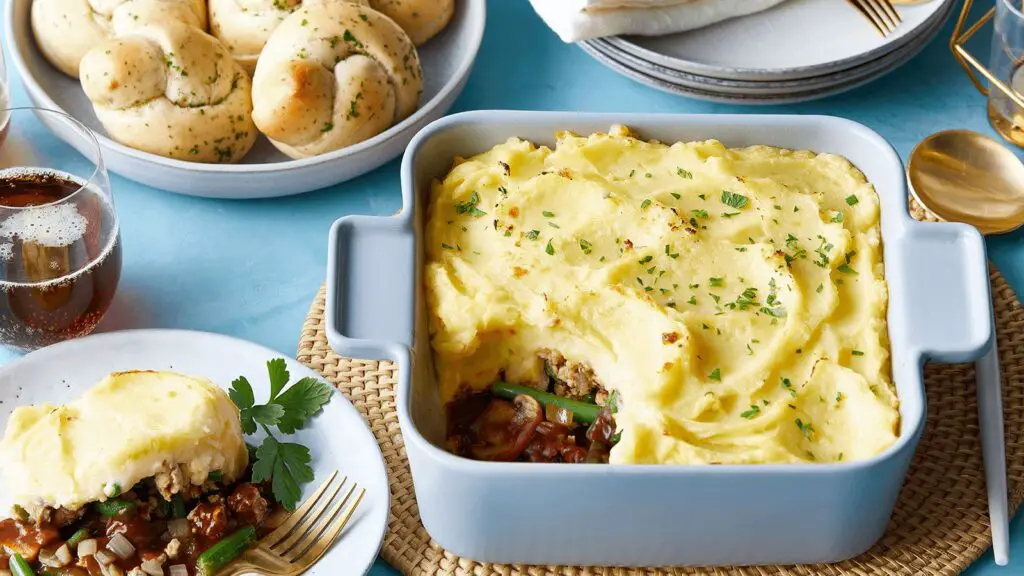
Christmas cookies, a beloved tradition during the holiday season, bring warmth and joy to festive celebrations. These delightful treats come in various shapes, flavors, and decorations, evoking memories of baking and sharing with loved ones. From classic sugar cookies to gingerbread men, the aroma of freshly baked Christmas cookies fills the air with a sense of anticipation and delight. While it’s tempting to indulge in these sweet treats immediately, sometimes it’s necessary to freeze them for later enjoyment. Freezing Christmas cookies allows you to extend their shelf life and have a stash of homemade goodness ready to be enjoyed whenever the craving strikes. In this guide, we will explore the proper techniques for freezing Christmas cookies, including packaging and storage methods, so you can have a treasure trove of festive treats at your fingertips. Join us as we delve into the world of freezing Christmas cookies and discover the joy of having a batch of freshly baked cookies available to share or savor throughout the year.
Here are the simple steps to freeze christmas cookies:
Step 1: Choose your Favorite Christmas Cookies
Selecting the right Christmas cookies before freezing them is an important step to ensure optimal results. Here’s why it’s crucial to consider factors such as texture, frosting, and decorations:
- Texture: Different types of cookies have varying textures. Some cookies, like sugar cookies or gingerbread cookies, have a firm and sturdy texture, making them more suitable for freezing. However, cookies with delicate or crispy textures, such as meringues or wafer-thin cookies, may not freeze well as they can become soft or lose their crispiness during the freezing process. By choosing cookies with a texture that holds up well to freezing, you can ensure they maintain their desired consistency even after thawing.
- Frosting: Take into account whether the cookies have frosting or icing. Some frostings, like buttercream or cream cheese frostings, tend to hold up better in the freezer compared to glazes or royal icing. Frostings that contain a high amount of fat or moisture are less likely to become grainy or separate when frozen. If your cookies have a frosting that doesn’t freeze well, consider omitting the frosting or adding it after thawing for better results.
- Decorations: Consider the decorations on your Christmas cookies. Sprinkles, colored sugar, or other edible embellishments may lose their vibrant colors or texture when frozen. If preserving the appearance of the decorations is important to you, it might be best to add them after thawing the cookies. Alternatively, you can choose cookies with decorations that freeze well, such as chocolate chips or nuts.
By taking these factors into consideration when selecting your Christmas cookies for freezing, you can ensure that the cookies not only retain their taste but also maintain their desired texture, frosting integrity, and decorative appeal. This step allows you to make informed choices and maximize the quality of your frozen Christmas cookies for later enjoyment.
Step 2: Allow Cookies to Cool Completely
After baking your Christmas cookies, it’s essential to let them cool completely before freezing. Cooling the cookies is crucial for several reasons:
- Preventing moisture buildup: When cookies come out of the oven, they retain some residual heat and moisture. If you immediately place warm or hot cookies in a freezer, the trapped heat and moisture can lead to condensation within the packaging. This moisture buildup can cause the cookies to become soggy or develop ice crystals during freezing, negatively affecting their texture and taste. Allowing the cookies to cool completely helps to minimize moisture content, reducing the risk of sogginess.
- Maintaining texture and structure: Warm cookies are more delicate and prone to breaking or losing their shape. By giving them sufficient time to cool, the cookies become firmer and less vulnerable to damage during the freezing process. This ensures that the cookies retain their desired texture and maintain their shape, allowing for a better eating experience when thawed.
- Avoiding packaging issues: Placing warm cookies in airtight containers or freezer bags can create steam, which can condense and lead to a loss of quality. Packaging warm cookies can also cause them to stick together, making it difficult to separate them later on. Allowing the cookies to cool completely prevents these issues, making it easier to package and store them properly.
- Time for flavors to develop: Some cookie recipes, especially those with spices or extract flavors, benefit from a cooling period. Allowing the cookies to cool completely before freezing gives these flavors time to develop and meld together, resulting in a more pronounced and balanced taste when they are thawed and enjoyed later.
By ensuring that your Christmas cookies are completely cooled before freezing, you can prevent moisture-related issues, maintain their texture and structure, avoid packaging problems, and allow their flavors to fully develop. This step is crucial in preserving the quality and taste of your cookies throughout the freezing and thawing process.
Step 3: Arrange Cookies in a Single Layer
When preparing your Christmas cookies for freezing, it’s important to arrange them in a single layer on a baking sheet or tray. Here’s why this step is crucial:
- Preventing sticking: Placing the cookies in a single layer ensures that they have enough space between them, reducing the likelihood of them sticking together during freezing. If cookies are stacked or placed too closely, their surfaces may come into contact, leading to sticking and potential damage when trying to separate them later. By arranging them in a single layer, you can avoid this issue and maintain the individual integrity of each cookie.
- Even freezing: Freezing the cookies in a single layer allows for more even and efficient freezing. When cookies are in close proximity, the airflow between them becomes limited, making it harder for them to freeze uniformly. By providing space around each cookie, cold air can circulate more freely, allowing the cookies to freeze at a consistent rate. This helps to preserve their texture and prevent any potential variations in freezing time.
- Ease of handling: Placing the cookies in a single layer makes it easier to handle them during the freezing process. When it’s time to transfer the cookies to containers or freezer bags, having them already arranged in a single layer allows for a more straightforward and organized process. It minimizes the risk of breaking or damaging the cookies as you handle them, ensuring that they remain intact and visually appealing.
- Optimal use of storage space: By arranging the cookies in a single layer, you can maximize the use of your freezer space. Flat, single-layered cookies take up less vertical space compared to stacked or overlapping cookies. This allows you to freeze a larger quantity of cookies and better utilize the available freezer space.
By taking the time to arrange your cooled Christmas cookies in a single layer, you can prevent sticking, ensure even freezing, facilitate easier handling, and optimize your freezer storage. These considerations contribute to maintaining the quality and presentation of your cookies throughout the freezing and thawing process.
Step 4: Place the Tray in the Freezer
Once you have arranged the cookies in a single layer on a baking sheet or tray, it’s time to transfer the tray to the freezer. Here’s why this step is important:
- Flash-freezing for shape and texture: Placing the tray with the cookies in the freezer for an initial period of 1 to 2 hours allows for flash-freezing. Flash-freezing involves rapidly freezing the cookies at a very low temperature, typically around 0°F (-18°C) or lower. This quick freezing process helps to maintain the shape and texture of the cookies. It prevents them from becoming misshapen or losing their structure during the freezing process. Flash-freezing also helps to preserve the moisture content of the cookies, contributing to their overall quality.
- Solid and firm texture: Allowing the cookies to freeze until they are solid and firm to the touch ensures that they are properly frozen. When you gently touch a frozen cookie, it should feel hard and not yield to pressure. This indicates that the cookies have frozen through and are less susceptible to damage or breaking during storage. A solid and firm texture also facilitates easier handling when it’s time to transfer the cookies to airtight containers or freezer bags.
- Uniform freezing: Placing the tray in the freezer ensures that the cookies freeze uniformly. The cold air in the freezer circulates around the tray, ensuring that each cookie receives the same freezing conditions. This helps to prevent variations in freezing time and ensures that all the cookies freeze at a consistent rate. Uniform freezing contributes to maintaining the overall quality and taste of the cookies.
By placing the tray with the cookies in the freezer and allowing them to freeze for about 1 to 2 hours, you enable flash-freezing, preserve the cookies’ shape and texture, ensure a solid and firm texture, and achieve uniform freezing. These factors are essential for preserving the quality and integrity of the cookies during storage and when they are later thawed for enjoyment.
Step 5: Package the Cookies
After the Christmas cookies have been properly frozen, it’s time to package them for long-term storage. Here’s why this step is crucial:
- Preserving freshness and preventing freezer burn: Transferring the frozen cookies to airtight containers or freezer-safe bags helps to seal in their freshness and protect them from freezer burn. Freezer burn occurs when food is exposed to air, causing moisture to evaporate and leaving behind dry, dehydrated patches. By using airtight containers or freezer bags, you create a barrier that prevents air from reaching the cookies, preserving their texture, flavor, and quality.
- Protection against odors and flavors: Packaging the cookies in airtight containers or bags also helps to prevent the absorption of odors and flavors from other foods in the freezer. Some foods, like fish or strongly aromatic items, can release odors that may transfer to the cookies if they are not adequately protected. By sealing the cookies in airtight packaging, you safeguard their original taste and prevent any unwanted flavors from affecting them.
- Removing excess air: If you choose to use freezer bags, it’s important to remove any excess air from the bags before sealing them tightly. Excess air can lead to freezer burn and affect the quality of the cookies over time. To remove air from the bags, gently press out as much air as possible before sealing them. This step helps to minimize the potential for moisture loss and maintain the cookies’ texture and taste.
- Organized storage: Proper packaging allows for more organized and efficient storage of the frozen cookies. Airtight containers or freezer bags help to keep the cookies compact and prevent them from shifting or getting crushed when stored. You can stack the containers or bags neatly in the freezer, maximizing the use of space and making it easier to locate and retrieve the cookies when desired.
By carefully packaging the frozen Christmas cookies in airtight containers or freezer bags, removing excess air, and ensuring a proper seal, you protect the cookies from freezer burn, prevent flavor contamination, maintain their texture and taste, and facilitate organized storage. These considerations contribute to preserving the quality and enjoyment of the cookies when they are later thawed and consumed.
Step 6: Label and Date the Packages
Labeling and dating the packages of your frozen Christmas cookies is an important step for organization and optimal consumption. Here’s why this step is beneficial:
- Identification of cookie types: By labeling each package with the cookie type, you can easily identify the variety of cookies stored in each container or bag. This is especially helpful if you have frozen different types of cookies and want to select a specific flavor or style when it’s time to enjoy them. Labeling ensures that you can quickly find the cookies you’re in the mood for without having to open multiple packages to check their contents.
- Tracking freshness and quality: Dating the packages with the date of freezing provides valuable information about the freshness and age of the cookies. It allows you to keep track of how long the cookies have been in the freezer, helping you prioritize consumption based on their storage duration. This practice ensures that you consume the oldest cookies first to enjoy them at their peak quality while they are still within their recommended storage time frame.
- Preventing wastage: By having a clear date on each package, you can easily determine if any cookies have exceeded their recommended storage time. This helps prevent wastage by identifying cookies that may have deteriorated in quality or flavor due to prolonged freezing. You can make informed decisions on whether to consume them promptly or discard them if they are past their best.
- Maintaining inventory control: Labeling and dating the packages also allow you to maintain inventory control. You can keep track of the quantity and variety of cookies you have in the freezer, making it easier to plan for future occasions or baking needs. This information helps you avoid unnecessary duplication or ensure that you have a good variety of cookies on hand for different occasions.
By labeling and dating the packages of your frozen Christmas cookies, you can easily identify the cookie types, track their freshness and quality, prevent wastage, and maintain inventory control. This practice helps you enjoy the cookies in an organized and efficient manner while ensuring that you make the most of their optimal storage period.
Step 7: Store in the Freezer
After properly labeling and dating the packages of your Christmas cookies, it’s time to return them to the freezer for long-term storage. Here’s why this step is important:
- Preservation of quality: Storing the labeled packages of Christmas cookies in the freezer helps to maintain their freshness, texture, and taste. The freezing temperature slows down the degradation process, preventing the cookies from becoming stale or spoiling. Freezing also helps to preserve the flavors and ensure that the cookies retain their desired characteristics when thawed.
- Protection from damage: When storing the packages in the freezer, it’s essential to place them in a section where they won’t be crushed or damaged by other frozen items. Carefully select a location where the cookies can be stored in a stable position without being subject to excessive pressure or movement. This protects them from being crushed or broken, preserving their appearance and texture.
- Prevention of flavor transfer: It’s advisable to store the Christmas cookie packages away from strong-smelling foods in the freezer. Some foods have potent odors that can permeate through packaging materials and potentially transfer flavors to the cookies. By keeping the cookies separate from such items, you can preserve their original flavors and prevent any unwanted flavor contamination.
- Organization and easy access: Properly storing the labeled packages of Christmas cookies in the freezer contributes to organization and easy access. Arrange the packages in a way that allows for efficient use of space and facilitates easy retrieval. Consider using bins, baskets, or shelves to keep the packages neatly organized, making it convenient to locate and select the desired cookies when you’re ready to enjoy them.
By storing the labeled packages of Christmas cookies in the freezer, you ensure the preservation of their quality, protect them from damage, prevent flavor transfer, and maintain organization and accessibility.
How long can christmas cookies last in the freezer?
Christmas cookies can last in the freezer for up to 2-3 months without significant loss of quality. Properly stored and packaged cookies have a longer freezer life, retaining their taste and texture. However, it’s recommended to consume them within the first 2-3 months for the best flavor experience.
Step 8: Thaw the Christmas Cookies
Once you’re ready to savor your frozen Christmas cookies, it’s time to thaw them before indulging in their delightful flavors. Here’s why this step is important:
- Restore texture and taste: Thawing the frozen cookies allows them to return to their original texture and taste. While frozen, the moisture within the cookies is in a solid state, but thawing at room temperature helps to rehydrate the cookies and bring back their softness, crispness, or chewiness, depending on their original texture. Thawing also allows the flavors to fully develop, enhancing the overall taste experience.
- Room temperature thawing: Thawing the cookies at room temperature is recommended for a gentle and even thawing process. Simply remove the desired amount of cookies from the freezer and place them on a plate or tray at room temperature. The time required for thawing will depend on the size and thickness of the cookies. Generally, smaller cookies may thaw within 15 to 30 minutes, while larger or thicker cookies may require up to an hour.
- Preserving visual appeal: Allowing the cookies to thaw at room temperature helps maintain their visual appeal. While frozen, cookies may develop frost or ice crystals on their surfaces. Thawing at room temperature minimizes condensation and ensures that the cookies retain their original appearance without any unwanted moisture-related effects.
By allowing the frozen Christmas cookies to thaw at room temperature, you restore their texture and taste, preserve their visual appeal, and ensure that they are ready for consumption. This step brings the cookies back to their delicious, ready-to-eat state, allowing you to enjoy the flavors and festive spirit whenever the craving strikes.
Other related questions
Can you refreeze Christmas cookies?
It is generally not recommended to refreeze Christmas cookies once they have been thawed. Refreezing can compromise the texture and quality of the cookies, leading to potential loss of flavor and freshness. It is best to consume the thawed cookies or store them in the refrigerator for a short period rather than refreezing them.
How do I know if the Christmas cookies have gone bad after being frozen?
To determine if Christmas cookies have gone bad after being frozen, there are a few signs to look for. If the cookies develop an off or rancid smell, have noticeable mold growth, or show significant freezer burn with dry, discolored, or hard spots, it indicates spoilage. Additionally, changes in texture, such as excessive sogginess or brittleness, can also indicate that the cookies are no longer suitable for consumption. It’s important to trust your senses and discard any frozen cookies that show these signs of spoilage.
Can you freeze Christmas cookie dough instead of baked cookies?
Yes, you can freeze Christmas cookie dough instead of baking the cookies right away. Freezing cookie dough allows for convenient preparation in advance. To do so, shape the dough into individual portions or rolls, wrap them tightly in plastic wrap or place them in airtight containers, and freeze. When you’re ready to bake, simply thaw the dough in the refrigerator, then proceed with the baking instructions as usual.
Can you freeze Christmas cookies with fillings or ganache?
Yes, you can freeze Christmas cookies with fillings or ganache, but it’s important to consider a few factors. First, ensure that the cookies are fully assembled with the fillings or ganache before freezing. Then, place the cookies in a single layer on a baking sheet or tray, and freeze them until firm.
Can you freeze a Christmas cake with marzipan or fondant decorations?
Yes, you can freeze a Christmas cake with marzipan or fondant decorations. Before freezing, it’s important to ensure that the decorations are firm and securely attached to the cake. Place the cake in an airtight container or wrap it tightly with plastic wrap, taking care to protect the decorations. When thawing, allow the cake to come to room temperature gradually to prevent condensation from affecting the decorations.
Can you freeze a Christmas cake with alcohol-soaked fruits?
Yes, you can freeze a Christmas cake with alcohol-soaked fruits. The alcohol acts as a preservative, helping to maintain the fruit’s flavor and moisture. Ensure the cake is properly wrapped or stored in an airtight container to prevent any odors or flavors from transferring to other foods in the freezer. When thawing, allow the cake to defrost at room temperature to preserve its texture and taste.








